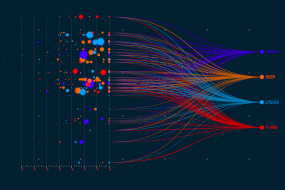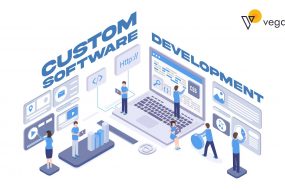
The Solana blockchain has emerged as one of the leading next-generation blockchain platforms thanks to its high speed, scalability, and low transaction fees. Solana phones utilize a unique proof-of-history consensus mechanism that enables it to process up to 50,000 transactions per second with 400ms block times, making it one of the fastest blockchains available today.
Solana phones represent an exciting development that aims to unlock the full potential of Solana and decentralized applications (dApps) on mobile devices. The idea behind Solana phones is to create mobile devices that natively support Solana dApps and decentralized finance (DeFi) applications. Rather than needing to use a separate crypto wallet or browser extension like Metamask, Solana phones would allow users to directly access dApps through a built-in Solana wallet and browser.
By seamlessly integrating Solana support at the operating system level, It could provide users with lightning-fast speeds for transacting and interacting with dApps. This would open up a whole new realm of real-world use cases for Solana’s low-cost, high-speed transactions, from mobile crypto payments to accessing DeFi services on the go. Solana phones have the potential to finally bring the convenience and possibilities of Web3 to users’ fingertips through trusted and secure mobile devices optimized for the Solana ecosystem.
What are Solana Phones?
Solana Phones, specifically branded as “Saga,” are smartphones designed by the Solana blockchain network team to integrate and enhance blockchain and Web3 functionalities. These phones are built to facilitate seamless interactions with decentralized applications (dApps), making it easier for users to access blockchain services directly from their mobile devices. Key features of Solana Phones include:
- Native Crypto Wallet Integration: Saga phones come with built-in support for Solana’s crypto wallet, allowing users to store, send, and receive cryptocurrencies securely.
- dApp Support: They provide optimized access to decentralized applications, enabling users to engage with DeFi platforms, NFT marketplaces, and other blockchain-based services effortlessly.
- Secure Transactions: Enhanced security features are implemented to protect users’ digital assets and private keys, ensuring safe and secure transactions.
- Solana Pay: Integrated Solana Pay support for quick and easy cryptocurrency payments.
- Developer Tools: Tools and APIs for developers to build and deploy dApps specifically tailored for mobile use on the Solana network.
Solana Phones aim to bridge the gap between blockchain technology and everyday mobile use, making it more accessible and user-friendly for both developers and consumers.
Potential Benefits Of Solana Phones
Solana phones have the potential to provide several key benefits to users looking to access and utilize decentralized applications and services. One of the main potential benefits is providing easy and direct access to fast, low-cost Solana dApps and DeFi applications without requiring a separate crypto wallet.
With Solana phones having crypto wallets and Web3 browsers built-in, users can seamlessly access DEXs, NFT marketplaces, prediction markets, play-to-earn games, and other dApps running on Solana’s high-speed network. This provides a frictionless onramp to DeFi and avoids the need for managing a separate wallet’s seed phrase.
In addition, It could offer a user-friendly gateway for onboarding mainstream consumers to Web3 and decentralized services. With intuitive built-in wallets and browsers, even crypto novices could easily use dApps and enter the world of decentralized finance. Solana phones have the potential to greatly simplify and streamline access to the opportunities of Web3 for the average user.
Overall, by integrating Solana’s lightning fast performance and low transaction costs directly into mobile devices, Solana phones could enable smooth, secure access to the expanding decentralized web for millions of potential new users worldwide. This helps fulfill Solana’s vision of mass adoption for Web3 and DeFi applications.
Current State of Solana Phone Development
A few companies are currently working on developing Solana-based smartphones. These include:
OSOM OV1
OSOM is developing the OV1, which will be one of the first Solana phones on the market. The OV1 will run a custom version of Android designed specifically for Solana integration and dApp support.
OSOM has completed the initial hardware and software design for the OV1. They are currently working on optimizing and finalizing the software, with an expected launch in late 2022 or early 2023.
Saga
Saga is another startup working on a Solana smartphone. Their focus is on creating a simple and secure device tailored for crypto users.
The Saga phone is still in early development. They have shown concept designs and prototypes but do not have a confirmed launch date yet. Saga is aiming to launch in 2023 if development goes smoothly.
Other Potential Projects
There are hints that other major hardware companies may also be exploring Solana phones. However, there are no confirmed projects yet beyond OSOM and Saga.
Overall, Solana smartphone development is still in the early stages. But initial products are expected to hit the market in 2023 if current timelines hold up. This will help drive further innovation and adoption of Solana mobile devices.
Solana Phone Specifications
Solana phones are built on the Solana blockchain and are expected to have high-end smartphone hardware specifications along with a built-in crypto wallet.
Hardware
- Display – Solana phones will likely have OLED or AMOLED displays ranging from 5.5″ to 6.7″ with high resolution like QHD+ or 4K. Refresh rates around 90Hz or 120Hz are expected.
- Processor – Top-end Solana phones may use the latest Qualcomm Snapdragon 8+ Gen 1 chip while mid-range models could opt for the Snapdragon 778G+. 8GB or 12GB RAM configurations are likely.
- Camera – We can expect to see triple or quad camera arrays on Solana phones with main sensors between 48MP to 108MP. Ultra-wide, telephoto and depth sensors will also be included.
- Battery – Battery capacities ranging from 4,000 mAh to 5,000 mAh with fast charging up to 80W can be expected. Some models may support wireless charging.
- Storage – 128GB or 256GB of internal storage is likely on base models, along with microSD expansion up to 1TB on some variants.
Cryptocurrency Wallet
All Solana phones will come with a built-in crypto wallet supporting Solana tokens and NFTs. The wallet may also be compatible with other cryptocurrencies like Bitcoin, Ethereum etc. Wallet features will include:
- Secure storage of private keys on a hardware-isolated chip.
- Ability to transfer, receive and sign blockchain transactions.
- Support for Solana dApps through an integrated DApp browser.
- NFT functionality including buying, storing and displaying digital collectibles.
- Staking features to earn rewards on supported cryptocurrencies.
- Interoperability with external crypto wallets like Phantom, Slope and more.
The crypto wallet aims to provide users with seamless access to Web3 and decentralized apps on the go. Private keys will be protected through advanced security protocols.
Potential Solana dApps and Use Cases
The high speed and low cost of Solana make it well-suited for building mobile apps optimized for Solana phones. Here are some of the potential use cases:
Games
- Fast action multiplayer games that utilize Solana’s high throughput. These could include RPGs, RTS games, MOBAs, and more.
- Blockchain-based games with true digital asset ownership and provably fair mechanics.
- Casual and hypercasual games that leverage Solana NFTs.
Social Media
- Decentralized social media apps that give users control over their data and enable censorship resistance.
- Platforms for sharing user generated content like photos and videos. Could utilize Solana NFTs.
DeFi
- Mobile crypto wallets for SOL, SPL tokens, and NFTs.
- Lite apps for decentralized exchanges, yield farming, and lending/borrowing.
- Prediction markets and gambling dApps.
Other Use Cases
- DAO organization and voting apps.
- Decentralized file storage and sharing.
- Messaging apps with emphasis on privacy and security.
- Apps for buying and selling goods and services.
The high speed and low fees of Solana blockchain make it ideal for creating fast and responsive mobile dApps that would be cumbersome on networks like Ethereum. Solana phones could open the door to innovative and novel dApp use cases.
Solana Phone Security
Solana phones are designed with security as a top priority. This includes both hardware-based security features as well as leveraging the inherent security properties of the Solana blockchain itself.
One key hardware security feature is the use of built-in encryption for private keys. Private keys will be stored in a secure enclave chip that provides hardware-based encryption to protect user keys and account information. The secure enclave operates independently from the main processor to provide an isolated environment for sensitive data. Its encryption cannot be bypassed by the main OS.
The secure enclave chip will utilize state-of-the-art encryption like AES-256 to encrypt private keys. There will also likely be cryptographic measures like hashing and salting to further enhance security. The enclave chip will make it much harder for private keys to be stolen, even in the event the phone is hacked or compromised.
In addition to hardware encryption, Solana phones will benefit from the underlying security design of the Solana blockchain. Solana utilizes a unique proof-of-history consensus that helps prevent transaction duplication and double spends. It also scales transaction throughput without sacrificing decentralization. Solana currently handles over 65,000 transactions per second, reducing opportunities for exploits during validation.
Solana’s focus on speed and efficiency provides a strong foundation for secure and streamlined dApp usage on Solana phones. The blockchain’s security innovations will complement the hardware-based security protections on the phone itself. Together, these measures will provide users with confidence in the safety of accessing and storing tokens and NFTs on a Solana device.
Role of Solana Phones in Advancing Web3
Solana phones have the potential to play an important role in advancing Web3 adoption and decentralization. Here are some of the key ways Solana phones could contribute:
- Onboarding New Users to dApps and DeFi – By providing easy access to decentralized apps and crypto wallets, Solana phones could dramatically lower the barriers to entry for new users to explore DeFi, NFTs, DAOs, and other Web3 concepts. Mobile devices are familiar and user-friendly, so Solana phones could help onboard the next wave of Web3 users.
- Helping Build Out the Solana Ecosystem – More Solana phones in circulation will grow the user base and activity on Solana-based dApps. This could attract more developers to build on Solana, further expanding its ecosystem. The phones are a tangible bridge bringing more users into the Solana network.
- Pushing Mobile Computing Toward Decentralization – Today’s mobile devices and app ecosystems are largely centralized, dominated by Apple and Google. Solana phones introduce the possibility of mobile devices aligned with decentralization values. If Solana phones gain traction, it could push mobile technology as a whole in a more decentralized direction long-term.
By getting Solana and crypto wallets into people’s pockets, Solana phones have the opportunity to dramatically advance decentralized app usage and bring Web3 mainstream. But realizing this potential will depend on Solana phones delivering a seamless, user-friendly experience.
Conclusion
Solana phones represent an exciting development in bringing decentralized apps and web3 technology to mobile devices. With fast transaction speeds, low fees, and an ecosystem of dApps, Solana’s blockchain is well-suited for smartphone integration.
Though still in early stages, the first Solana phone prototypes showcase the potential for features like secure messaging, crypto wallets, NFT galleries, and access to DeFi apps. As development continues, Solana phones could enable wider adoption of crypto and decentralized services through user-friendly mobile access.
However, some challenges remain around optimizing Solana phones for everyday use, hardware limitations, and seamless dApp integration. It may take time to refine the software, build out the app ecosystem, and convince consumers to switch from traditional phones. But the promise of mobiles powered by a fast, scalable blockchain is exciting.
If Solana phone makers can deliver an intuitive, practical user experience while highlighting unique web3 capabilities, Solana smartphones could become a gateway to the decentralized future. While adoption is still early, Solana phones represent a bold vision of integrating crypto utilities into the daily lives of mobile users. The coming years will reveal if Solana mobiles can fulfill this transformative potential.











